Content
1. An Overview of System Integration Testing
2. Importance of System Integration Testing
3. Benefits of System Integration Testing
4. System Integration Testing Techniques
5. System Integration Testing: Best Practices
6. Factors to Consider While Integration Testing
7. Conclusion
8. How Can TestingXperts Help You with System Integration Testing?
An Overview of System Integration Testing

System Integration Testing, or SIT, is a QA process that is leveraged to ensure the compatibility of two or more systems. It helps to ensure that the systems are working together correctly and that any interactions are appropriate and safe. This process can involve the testing of software, systems, or networks. It can also involve testing of the system’s performance, integrity, and compatibility.
System integration testing can be leveraged for different goals, and it can be used in both the development and production environments. System integration testing can be used in a stand-alone or as a part of a large-scale and continuous software development process. System integration testing helps ensure that the systems in a business are working as they should. It is used to identify and fix bugs within the systems and to ensure that the systems are performing as expected.
Importance of System Integration Testing

System integration testing is an essential part of many business operations. It allows for the identification and cleaning up of systems, data, and processes. The importance of system integration testing is evident as it verifies that all components of a system interact with each other correctly. This type of testing ensures that any changes made to one component do not have an adverse impact on the other components or the overall system. SIT also helps identify and resolve any compatibility issues between different systems, which are necessary for successful integration.
In the absence of SIT, there is a risk that modifications or updates made to one component could cause unexpected problems in another component or even crash the entire system. Additionally, SIT helps reduce the cost and time associated with debugging and troubleshooting problems related to integration issues.
SIT also helps identify potential security risks in a system by testing how different components interact with each other, as well as how they respond to external inputs such as user input or data from other systems. By conducting thorough SIT tests, organizations can ensure that their systems are secure and free from vulnerabilities before they go live.
Benefits of System Integration Testing
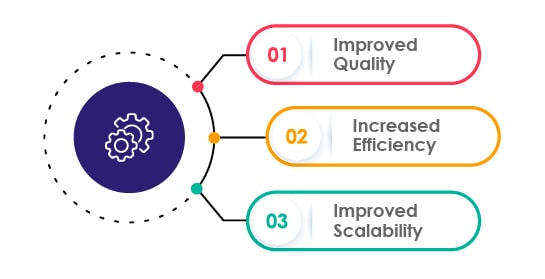
System integration testing helps to ensure that all the components of a system work together as intended. By testing the interactions between different systems, System integration testing helps to identify and fix any issues before they cause serious product failure. Here are the key benefits of System integration testing:
Improved Quality:
System integration testing helps to ensure that all components of the system are working together properly, which can improve the quality of the final product. This is especially important for complex systems with multiple components that need to be tested and integrated together.
Increased Efficiency:
System integration testing helps to streamline processes by ensuring that all components are working correctly before they are integrated into a larger system. This not only reduces development time but also ensures that all parts of the system are functioning as intended, which leads to increased overall efficiency.
Improved Scalability:
System integration testing helps to identify any potential issues that could arise when scaling up or down a system, allowing for more efficient scaling in the future. This helps to ensure that all components of the system remain compatible as it grows or shrinks in size, improving scalability and reducing disruption during changes in scale.
System Integration Testing Techniques
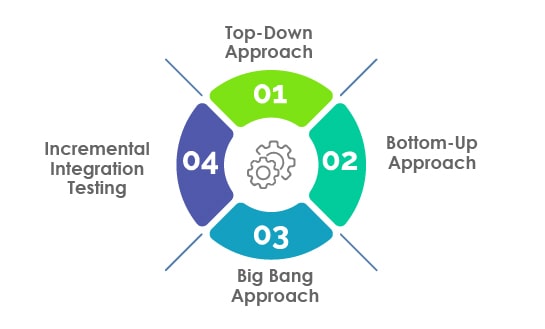
There are four key approaches to system integration testing:
Top-Down Approach:
This approach starts with the highest level of the system and works its way down to the individual components. This allows for a comprehensive test of all components and how they interact with each other.
Bottom-Up Approach:
This approach begins by testing the lowest level components, then moves up through each component until the entire system has been tested. This approach can help to identify any errors within individual components before they affect other parts of the system.
Big Bang Approach:
This approach tests all components at once, which can be beneficial for systems with many interconnected parts that need to be tested together in order to get accurate results. However, this approach can be difficult to manage due to its complexity and lack of control over individual components.
Incremental Integration Testing:
This approach breaks down large systems into smaller pieces in order to more easily manage them during testing. Each component is tested separately, then integrated one piece at a time until the entire system has been tested successfully. This method provides more control over individual components and can help identify potential issues early on in the process.
System Integration Testing: Best Practices
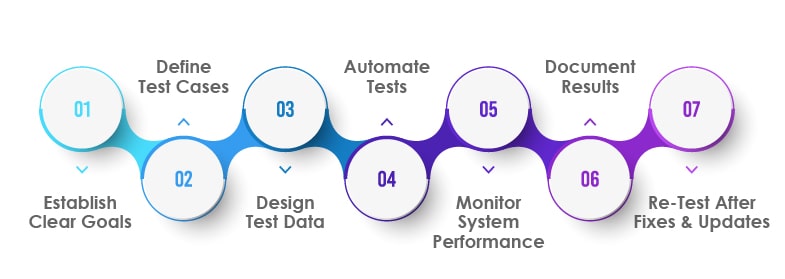
Here are some best practices for the successful implementation of system integration testing:
Establish Clear Goals:
Before beginning system integration testing, it’s important to establish clear goals for the test. This will help ensure that all components are thoroughly tested and that any issues are identified early in the process.
Define Test Cases:
Once goals have been established, define specific test cases that will be used to validate the system’s functionality. This should include both positive and negative tests to ensure all possible scenarios are covered.
Design Test Data:
Designing test data can help make sure all relevant scenarios have been tested and that results can be accurately compared against expected outcomes.
Automate Tests:
Automating system integration tests help reduce manual effort and speed up the testing process by running multiple tests at once. It also makes it easier to identify potential issues quickly and accurately since results can be compared against expected outcomes more easily with automation tools.
Monitor System Performance:
When running SIT tests, it’s important to monitor system performance throughout the process to identify any potential bottlenecks or areas where performance could be improved to optimize the overall system performance.
Document Results:
Documenting test results is essential for tracking progress and ensuring quality standards are met throughout the testing process. This should include detailed descriptions of each test case run, any errors encountered during testing, and any resolutions or recommendations made based on those errors or results obtained from tests run successfully.
Re-Test After Fixes & Updates:
Once fixes or updates have been implemented, re-testing should be conducted in order to confirm that changes were successful in resolving existing issues or improving upon existing functionality as desired.
Factors to Consider While Integration Testing
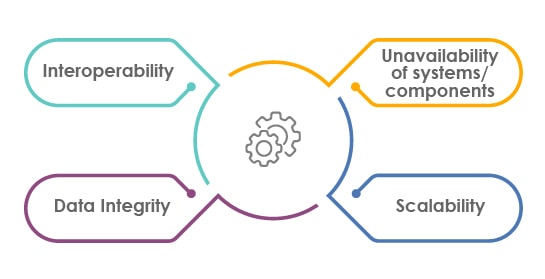
In some scenarios, this type of testing can be challenging due to its complexity and scope. Here are three common challenges associated with system integration testing:
Interoperability:
System integration testing requires the verification of how different systems interact with each other. This can be difficult to achieve if there are multiple systems involved, or if they use different technologies or protocols.
Data Integrity:
System integration testing must also ensure that data is transferred correctly between different systems and databases, and that any changes made to one system do not affect the others. This requires extensive testing to ensure data integrity across all systems.
Scalability:
As new features and functionality are added to a system, it must remain scalable so that performance does not suffer when more users access the system simultaneously. System integration testing must verify that the system can handle increased loads without compromising performance or reliability.
Unavailability of systems/components:
One of the biggest challenges associated with this type of testing is the unavailability of third-party environments or components. This can be due to various reasons such as budget constraints, lack of resources, and so on. This challenge may be overcome with service virtualization which allows the QA teams to simulate the behavior of external systems to test the applications without having access. It also helps reduce costs associated with testing by eliminating the need for physical hardware and personnel resources. With service virtualization, QA teams can create realistic simulations that mimic the behavior of real-world environments and services to perform system integration tests. This makes it easier for teams to run multiple tests simultaneously on different configurations and platforms and against different scenarios and conditions before they are released into production.
Conclusion
System integration testing, or SIT, is the process of comprehensive testing performed on the application and the complete system, generally comprising more than one smaller unit of software and hardware. The primary objective of performing system integration testing is to make sure the functional aspects of the software and hardware systems are in sync with each other. The SIT testing is ideal for tracing the defects and errors in their early stage and helps achieve earlier feedback on the acceptance of every module.
How Can TestingXperts Help You with System Integration Testing?

Digital businesses following agile and DevOps should adopt integration testing techniques so that various software modules function effectively when grouped. Leveraging TestingXperts’ next-gen testing service for integration testing helps businesses improve the existing QA processes by best practices and assures more rapid development, faster time to market, and quicker ROI.
Our System Integration Testing Approach:
Big Bang Integration Testing:
Almost all the units or central units are combined to perform integration testing in one attempt, mostly when teams have entire software in their bundle.
Incremental Testing:
A minimum of two logically related modules are tested and summed up to perform testing and achieve the desired functioning.
Top-down Integration Testing:
QA teams test the top-level units first and perform step-by-step testing of lower-level units.
Bottom-up Integration Testing:
Engineers start testing from the lower units of the application and gradually move up.
Hybrid/Sandwich Integration Testing:
A combination based on bottom-up and top-down strategy leveraged for a comprehensive system integration testing approach.
The post System Integration Testing (SIT) – A Detailed Overview first appeared on TestingXperts.

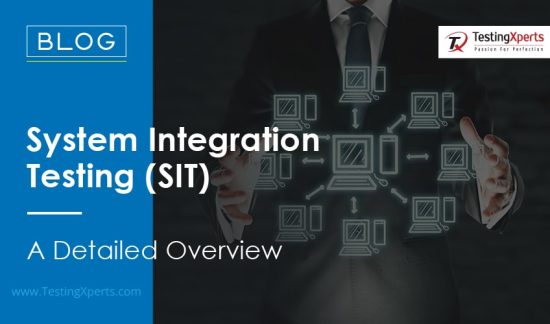
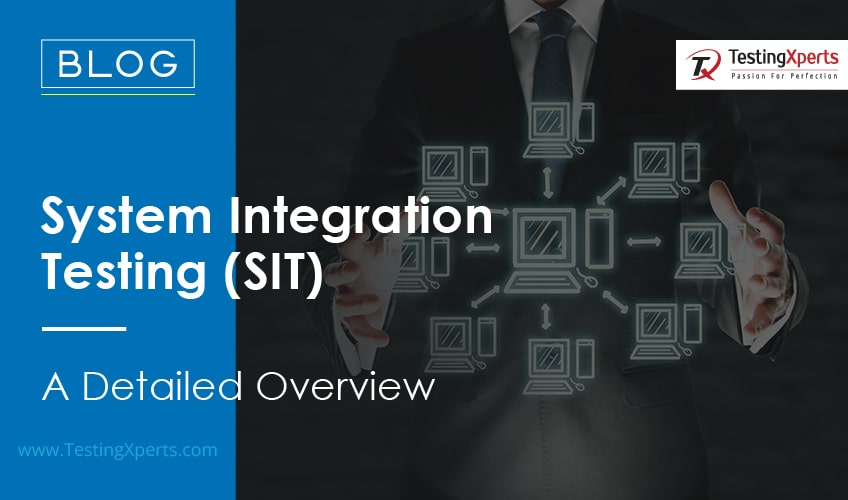




I will right away take hold of your rss as I can not find your e-mail subscription hyperlink or newsletter service. Do you’ve any? Please allow me realize so that I could subscribe. Thanks.
Thanks for another informative web site. Where else could I get that kind of information written in such an ideal way? I’ve a project that I’m just now working on, and I have been on the look out for such information.
hey, your internet site is excellent. We do appreciate your work
The ending hints at a sequel! Oh joy… So this well-made but extremely shallow film is bogged down even more by an extremely UN-original screenplay and heartless direction, and that’s sad.
I have realized that over the course of building a relationship with real estate owners, you’ll be able to come to understand that, in every real estate financial transaction, a commission amount is paid. Ultimately, FSBO sellers do not “save” the commission rate. Rather, they try to win the commission through doing a agent’s work. In the process, they expend their money and also time to complete, as best they might, the tasks of an adviser. Those tasks include disclosing the home via marketing, showing the home to buyers, making a sense of buyer desperation in order to induce an offer, organizing home inspections, taking on qualification inspections with the loan provider, supervising maintenance tasks, and facilitating the closing of the deal.
I am lucky that I discovered this web site, just the right info that I was looking for!
Some genuinely great blog posts on this internet site , regards for contribution.
This may be the proper weblog for anybody who wishes to find out about this topic. You recognize a great deal of its practically challenging to argue with you (not that When i would want…HaHa). You actually put the latest spin for a topic thats been written about for some time. Excellent stuff, just wonderful!
James Mangold’s filmography currently covers a wide range of genres, and this experience had benefited him since Knight and Day contains plenty all rolled into one, with action, comedy, science fiction and even serious drama all included.
Wow! Thanks! I have wanted to enter in my webblog something similar to that. Can I reference part of your post to my site? Thanks once more for sharing this online. I certainly loved every bit of it.
I likewise conceive thus, perfectly written post! .
You, my pal, ROCK! I found just the information I already searched all over the place and just could not locate it. What a perfect web site.
Thank you for sharing this great write-up. Very inspiring! (as always, btw)
This is a good common sense article. Very helpful to one who is just finding the resouces about this part. It will certainly help educate me.